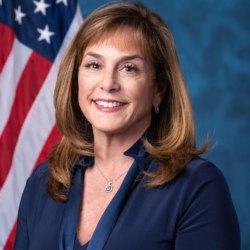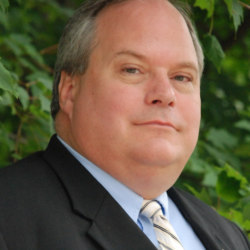The following is a recent discussion between U.S. Congresswoman Lisa C. McClain, Northwood University Economics department chair Dr. Dale C. Matcheck and Dr. Timothy G. Nash, director of the McNair Center for the Advancement of Free Enterprise and Entrepreneurship at Northwood University. The conversation centered around recent comments by U.S. Federal Reserve Bank (Fed) chairman, Jerome Powell and how the Federal Reserve intends to bring our nearly 40-year high rate of inflation down to levels prior to 2021.
McClain: It’s great to be here with two of my favorite economists, Northwood University’s Dr. Tim Nash, and Dr. Dale Matcheck, to discuss Federal Reserve monetary policy. Dale let’s start with you defining inflation.
Matcheck: Sure, Lisa, it’s great to be here. Inflation is the decline in a country’s currency purchasing power over a sustained period of time. Inflation is reflected in an increase in the average price level of goods, services, and assets. The best-known yardstick to measure U.S. inflation is the Consumer Price Index or CPI.
McClain: Tim, your and John Hantz’s recent inflation piece in The Detroit News underscored why it’s so important to discuss Milton Friedman when determining the cause of inflation and how to battle it. Especially topical, given our current inflation rate is near a 40-year high as measured by the CPI.
Nash: Thanks, Lisa. Milton Friedman is still important and relevant today, because he was widely regarded as the world’s greatest scholar and historian of U.S. monetary policy. Dr. Friedman famously said, “inflation is always and everywhere a monetary phenomenon that is produced only by a more rapid increase in the quantity of money than output (goods, services, and/or assets).” If Dr. Friedman were alive, he’d blame our current inflation on the U.S. Federal Reserve Bank’s excessive and recent expansionary monetary policy over the last four years. I believe Friedman’s cure for our current inflation rests with the Fed and its ability to control and reverse its recent expansionary monetary policy.
Matcheck: Friedman was also one of the first economists to point out that “Inflation is taxation without legislation.” As wages and salaries increase to keep up with the cost of living, it pushes people into higher tax brackets even though their standard of living has not increased. The inflation generates extra revenue for the government but reduces taxpayers’ real purchasing power.
Nash: Dale’s right. Another way Friedman accurately described inflation was as “the cruelest of all taxes as it is a hidden tax and harms the poor the most.” He further pointed out “that whether you are paying more to the government or not, as prices go up, those on fixed incomes suffer reduced purchasing power and are worse off. A secondary effect of inflation is politicians will often blame higher prices resulting from inflation on “greedy” business owners when the root cause is always government monetary policy. In fact, even though businesses are charging more for their goods or services with inflation, their profit margins are declining, and their business stability is weakened.
McClain: Alright guys, tell America what should be done to fight inflation.
Matcheck: Well, Lisa, while supply chain problems have exacerbated the situation, the root cause of the recent inflationary pressure is too much money in circulation chasing relatively too few goods and services, resulting in sustained rising prices. The antidote is for the Federal Reserve to reduce the supply of money relative to goods and services. I agree with Scott Minerd, chief investment officer at Guggenheim partners who recently stated the U.S. Federal Reserve Bank should shift its focus from controlling interest rates to reducing the size of its balance sheet. Minerd’s diagnosis follows Friedman’s logic about inflation. The reason our money supply has increased is that the Fed’s balance sheet is now at $8.7 trillion, more than doubling over the last four years. This rapid increase was caused by the Fed’s purchases of U.S. government securities ranging from treasury bills to mortgage-backed securities, which it pays banks for with existing or newly created dollars. The banks then inject that money into the economy via loans and other forms of investment. Conversely, the U.S. money supply shrinks when the Fed sells securities to banks. That’s what the Fed needs to do now.
McClain: Tim, do you agree with Dale?
Nash: Absolutely. I’d even go a little bit further by stating the Federal Reserve should let the market determine interest rates and have the Fed concentrate on shrinking its balance sheet. I have faith in the market to determine interest rates. It is important that the Fed act now as preliminary data for fourth quarter 2021 US GDP came out at the end of January with U.S. GDP up 6.9% for the fourth quarter of 2021, much higher than the 5.5% most economists were expecting, and up substantially from 2.3% growth in Q3 2021.
Even with impressive fourth quarter growth, the Fed has decided to continue to buy bonds and expand its massive balance sheet which could be $9 trillion by the time the Fed meets again in March.
It’s difficult to justify the Fed keeping interest rates at zero, buying bonds and growing its balance sheet for at least another six weeks, while expecting inflation will not rise above 7%. With the economy strong, the Fed should act now to battle inflation by contracting its balance sheet. Unfortunately, it may be too late for the Fed to get inflation under control while avoiding a recession in late 2022 or early 2023.
Matcheck: My chief concern, as Dr. Friedman taught us, is that when inflationary expectations take hold in an economy, it makes the Fed’s job that much harder when it finally acts. In fact, late in his career, Dr. Friedman suggested the Fed should target inflationary expectations directly using the TIPS spread. The TIPS spread is the difference between interest rates on inflation indexed bonds and regular bonds. Prior to the pandemic, it was around 1.67%. It was almost double that by last November. That’s a sign inflationary expectations are on the rise. The longer the Fed waits, the harder it will be to bring those under control.
Nash: I agree with Dr. Matcheck and recommend an article Guggenheim’s Minerd recently wrote for clients entitled “Forget Raising Rates, Shrink the Balance Sheet.” Minerd strongly supports allowing the market to determine interest rates with the Federal Reserve focusing on contracting its balance sheet. He aligns what is happening now to other U.S. inflationary periods, and points to successful policies used by then-Federal Reserve chairman Paul Volker to combat inflation in the 1970s and early 1980s. While Volker’s actions were too late to avoid the U.S. recession of the early 1980s, the good news is that it was short and the economic growth that followed was one of the most impressive increases in U.S. history. Let’s hope the Fed makes the right decisions, acts quickly, and that it’s not too late.
McClain: Gentlemen, thank you for your insights. I will share these with my constituents and Americans in general. Hopefully, the Federal Reserve heeds your advice and that of Mr. Minerd. Equally important is that we better manage the size and scope of government. Inflationary monetary policy should not be used to finance government, but rather be reserved to surgically deal with a rare and extraordinary crisis, such as our current pandemic.


